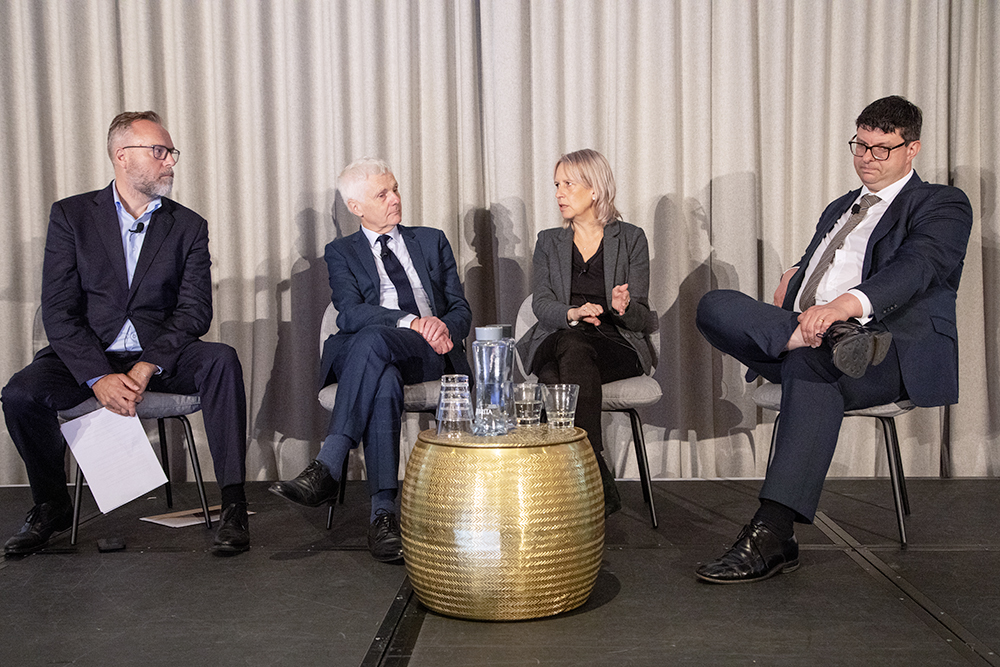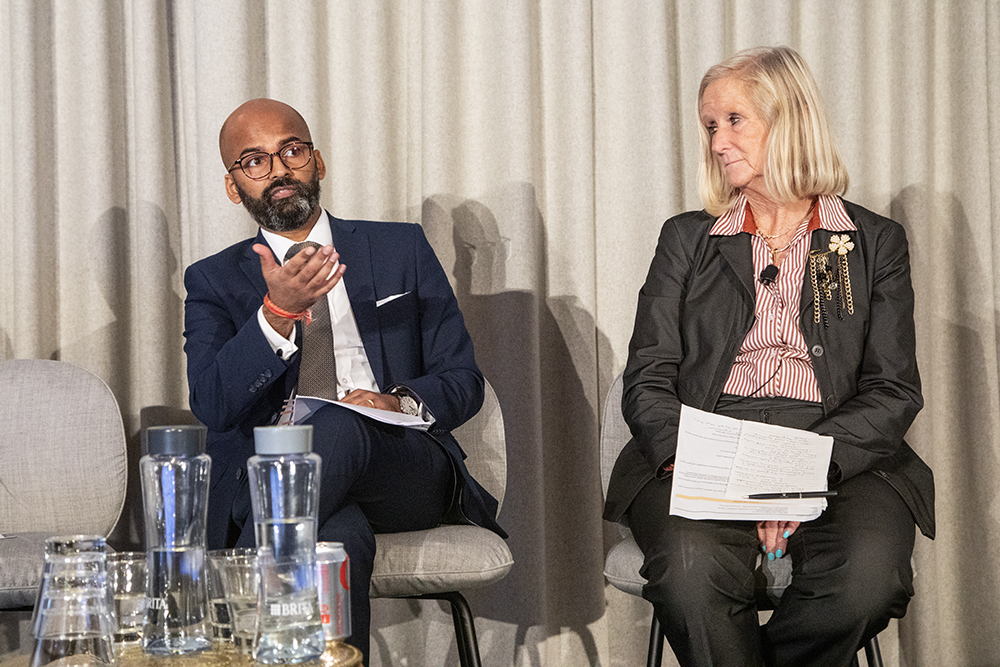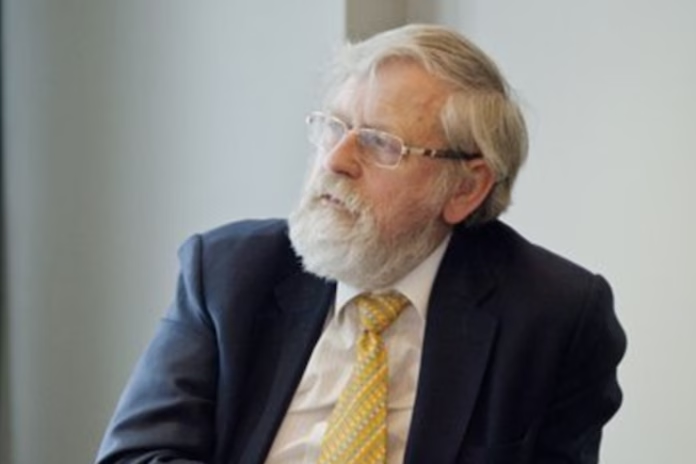The situation in local government has started to get so bad, that it’s good.
Chris Naylor, director at Inner Circle Consulting, presented this hypothesis in his opening remarks as chair of the Local Authority Treasurers Investment Forum & FDs’ Summit 2024 today (19 September).
Explaining, Naylor said that the current status quo is not sustainable. “The difficult bit is that it’s difficult to conceive what the next steps are to overcome the big challenges. Equally, I think it’s completely inconceivable that we’ll leave the second quarter of this century without something major changing.”
This was a theme picked up by the keynote panel, which consisted of Tony Travers, director at the London School of Economics, Carol Culley, president at CIPFA, and Henri Murison, chief executive of the Northern Powerhouse Partnership.

Culley outlined a local government funding system that is “fundamentally broken”. “The system is so broken,” she added, “I think we’ve forgotten what the sticking plasters are all trying to heal.” She described the “mismatch” in the role of local authorities around place-shaping and making things better for residents, and how funding for the sector works.
But there is always hope, Culley said, as she welcomed the “sense of purpose” that comes with a new government. “What I am really keen to ensure is that with manifesto commitments around business rates, social care and devolution, we don’t focus on the how rather than the what, and they become part of the answer, not a distraction,” she added.
Outlining possible solutions, both short- and long-term, Culley mentioned funding reform and redistribution along with devolution, but also discussed shifting to a “duty of prosperity” using “all the responsibilities local government has to start to grow the economic capital, be that planning for transport, infrastructure, digital infrastructure, and confidence for investors to invest alongside that”.
She also suggested putting a greater focus on prevention work, which was something Murison and Travers agreed would be beneficial.
Noting that many authorities are in a ‘doom spiral’, Murison said there was much that could be done to prevent future need and reduce the burden on local authorities. “But we choose not to spend money on [these things], and I think that is fundamentally the place where we need to put more of whatever limited money we’ve got as a country,” he said.
Travers said that the Treasury “fails to understand that there is a reason for investing to save that they find very hard to believe”.
Elsewhere in the panel discussion, Travers noted that within the local government family, “there are some authorities that are just on the edge [financially], and there are others that are actually nowhere near the edge” but “the government doesn’t really know which is which”.
He added: “Nobody is commissioned to work out which authorities are in real trouble. There is a challenge in trying to work out which authorities are in genuine distress, and then what to do about that, without creating what my economist colleagues would call ‘moral hazard’, by giving authorities money when others don’t get it, when somehow apparently rewarding ‘failure’.”
Referencing Naylor’s earlier hypothesis, Travers said “it’s so bad, it could potentially just be really bad – and the prospect of being good relies on government recognising there needs to be some sort of temporary [solution].”
Travers also detailed why reform of council tax and business rates would be so difficult for the government to do, but Murison was more optimistic that business rates reform “will happen”.
However, he said he wouldn’t give the responsibility to the Treasury. “It’s not in local government’s interests to continue to allow central government and the Treasury to together make these [types of] decisions in their own way and in isolation from the sector,” he said.
Finally, Travers argued that the government will have to achieve some level of growth “or risk suffering the fate of the last previous government”. Failure to achieve growth will mean “we’re just stuck with the public sector at exactly the size it is now, and it can never change. That means to get more money for one part of the public sector, you have to take it from the other,” he said.
There are “relatively simple” ways forward the government can pursue in the short term to allow local government to help itself, he said, including three-year settlements and allowing “some freedom” on council tax.
Closing, Travers said local government should “put as much pressure as is possible via the various local authority representative groups” on government, while calling for “certainty that finance settlements will at least be no worse for any authority in the next three-to-five years than they are now, as that would allow a significantly greater degree of forward planning that has been possible. Certainty will take some of the pressure off, at least.”
‘Sunshine’ in the macro-economy

Taking place as the Bank of England decided to hold rates at 5%, Sid Mehta, investment strategist at CCLA, kicked off the macro-economy panel, by reassuring the audience that in the first half of 2024 the UK “actually grew”, stating there was some “sunshine” in typically not a “race-horse economy”.
So, “it is worth us enjoying the growth rate, as we don’t know when it will come back down”, hinting that estimates suggest that growth will slow down in the second half of the year.
This comes as the new Labour government has put an increased focus on the private sector to invest in the UK to promote growth, with Mehta suggesting that for the sector to support this agenda there must be a focus on both investment and labour supply.
Deborah Cunningham, chief investment officer, global liquidity markets, senior portfolio manager and executive vice president at Federated Hermes, picked up on the US perspective, with the Federal reserve cutting interest rates by half point yesterday (18 September), shocking some economists.
Cunningham stated that the “outsize” move by the Fed was unexpected but the “important message” from yesterday’s message was that the end rate the Fed want to achieve was raised. However, she doesn’t expect the rate to go below 4.5% come the end of the year.
Picking up on the expected UK interest rate, both Mehta and Cunningham estimated that next cut may be in November.
Reporting by Jason Holland and Aysha Gilmore.
—————
FREE bi-weekly newsletters
Subscribe to Room151 Newsletters
Follow us on LinkedIn
Follow us here
Monthly Online Treasury Briefing
Sign up here with a .gov.uk email address
Room151 Webinars
Visit the Room151 channel














